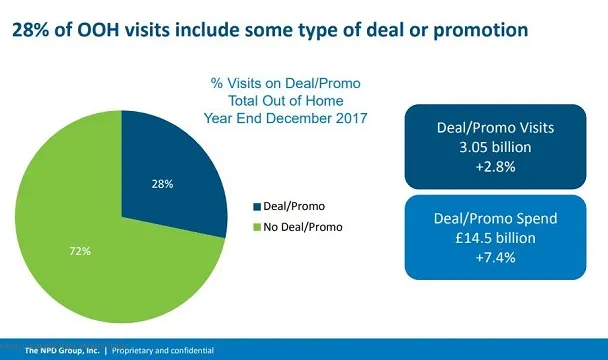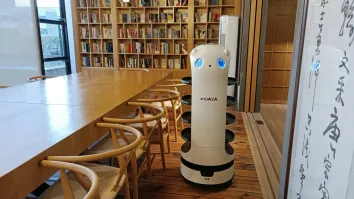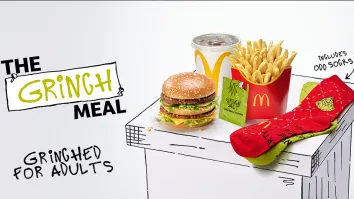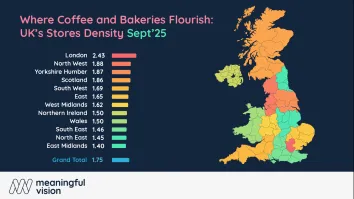
New Research Reveals How Operators Can Combat 'Meal Deal' Fatigue
The NPD Group shows that 28% of visits to the out of home (OOH) market involves some form of deal or promotion, this amounts to 3 billion visits a year and is worth £14.5 billion (data to end of December 2017).
Visits involving a deal or promotion grew behind non-deal visits throughout 2016 and most of 2017 as consumers could find good value for money without using more meal deals and promotions but also because they were not inspired by what was on offer. The majority of outlets presented a basic meal deal, a price reduction or a voucher, however nothing really stood out from the crowd and consumers began to suffer from discount fatigue.
Despite this fatigue, deals and promotions are a key part of the foodservice industry and will increase in importance in the future as economic factors continue to put pressure on consumers’ wallets. In fact, the most recent NPD data shows that deals are already recovering. In the year to December 2017, deal and promotion visits grew by +2.8% while non-deal visits declined by -0.4%.
Operators need to make sure they do not return to old habits however and instead make their deals and promotions more targeted and thus more effective. Meal deals for example are ideal for lunch, allowing consumers to pick up a selection of items for a set price, saving them time and money. At dinner, the best promotions are price reductions or vouchers with money off, as this is the most expensive daypart, but consumers still want more choice.
Cyril Lavenant, Head of Foodservice UK in the NPD group commented: “consumers love saving money and a deal or promotion is perfect for this. To really stand out from the crowd, deals and promotions need to be really impactful. Offering a free product with no expectations in return from the customer will surprise and delight them. While a striking reduced price for a limited time only will drive footfall and is more likely to spread via word of mouth.”
























